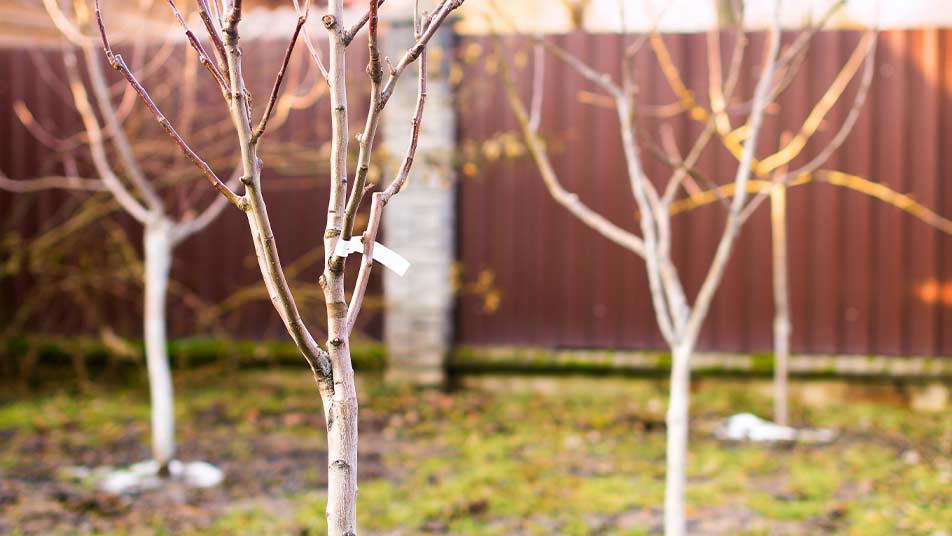
Shopping List:
- Your choice of apple tree on selected rootstock
- A garden spade
- A garden fork
- A tree stake
- A hammer
- Tree ties
- Mulch
- Secateurs
How to Choose an Apple Tree
Fruit trees can grow wide and tall, and many would be way too big for the average garden. However, many apple trees are grafted onto what we call a ‘rootstock’, which helps to manage their sizing. For small to medium-sized gardens, you should consider a dwarfing rootstock – but all apple trees will come with measurements that will help you make the decision.
When to Plant and Harvest Apple Trees
When to Plant Apple Trees
A pot grown apple tree can be planted at any time of the year. It’s important, however, that you make sure it is well watered especially through the warmest months of the year.
When Do Apple Trees Bloom?
Apple trees can take a few seasons to start producing fruit well, so getting them off to a good start is important. In terms of seasons, your apple trees usually have fruit to pick from late summer to autumn. You’ll know if these are ready by how easily they come away from the tree when pulling gently. If they don’t instantly come off, we’d suggest leaving them a little longer.
Step by Step Guide: How to Plant an Apple Tree
- Buy a container-grown apple tree, and then choose a sunny, sheltered spot where it can sit.
- Dig a hole that is deep and wide enough to hold the whole rootball before adding plenty of compost and forking it into the hole and around the area. You will also want to add a stake.
- Place the tree in the planting hole and carefully refill it, adding organic chicken manure pellets to the mix and making sure that the soil goes all around the roots to stop air pockets . Firm the soil by gently stepping around it. Use a tree tie to secure the tree to the stake.
- Water well and apply a thick mulch of organic matter around the tree, making sure that it does not touch the base of the trunk. Repeat this annually to keep your tree going strong.
- You’ll need to check that your apple tree has enough water throughout the summer. If the soil is dry, then watering well once a week should be plenty.
Top tip: Be sure to check which type of apple tree you buy. While some can produce fruit all on their own (self-fertile), some will require a second tree so that they can cross-pollinate!
How to Prune an Apple Tree
Apple trees are simple enough to plant, but they do require pruning each year. That is, cutting away dead or overgrown branches to help to create a healthier, stronger-growing tree with a better quality of fruit. Here are some tips to bear in mind:
- Pruning should be carried out when the tree is dormant over the winter.
- When you first prune your young tree, you’ll want to think about the shape that you want it to take as it grows. After that, your aim when pruning is to remove some wood each winter, so there is space between the branches for the sunlight to get through and the fruit to grow.
- Look out for dead wood, ‘suckers’ (shoots that are coming from the rootstock rather than above the graft) and any branches facing downwards.
- Other branches should be cut back by about one third of their length to encourage them to flower and fruit for the next season.

Know Your Apple Trees
Apple ‘Falstaff’
This crop will give you beautiful, red-coloured, crisp and fruity dessert apples. These are a popular choice not just thanks to their flavour, but the fact that they are amazing in spring for small-to-medium-sized gardens and because the apples can be easily stored.
Apple ‘James Grieve’
This award-winning tree brings you apples that are suitable for cooking, eating and juicing. They are also wonderful for spring blossoming and sit well in small-to-medium-sized gardens.
